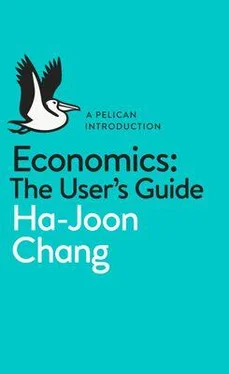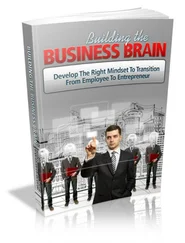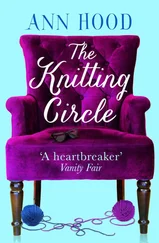Bruce Hood - The Domesticated Brain - A Pelican Introduction (Pelican Books)
Здесь есть возможность читать онлайн «Bruce Hood - The Domesticated Brain - A Pelican Introduction (Pelican Books)» весь текст электронной книги совершенно бесплатно (целиком полную версию без сокращений). В некоторых случаях можно слушать аудио, скачать через торрент в формате fb2 и присутствует краткое содержание. Год выпуска: 2014, ISBN: 2014, Издательство: Penguin Books Ltd, Жанр: Старинная литература, на английском языке. Описание произведения, (предисловие) а так же отзывы посетителей доступны на портале библиотеки ЛибКат.
- Название:The Domesticated Brain: A Pelican Introduction (Pelican Books)
- Автор:
- Издательство:Penguin Books Ltd
- Жанр:
- Год:2014
- ISBN:9780141974873
- Рейтинг книги:4 / 5. Голосов: 1
-
Избранное:Добавить в избранное
- Отзывы:
-
Ваша оценка:
- 80
- 1
- 2
- 3
- 4
- 5
The Domesticated Brain: A Pelican Introduction (Pelican Books): краткое содержание, описание и аннотация
Предлагаем к чтению аннотацию, описание, краткое содержание или предисловие (зависит от того, что написал сам автор книги «The Domesticated Brain: A Pelican Introduction (Pelican Books)»). Если вы не нашли необходимую информацию о книге — напишите в комментариях, мы постараемся отыскать её.
The Domesticated Brain: A Pelican Introduction (Pelican Books) — читать онлайн бесплатно полную книгу (весь текст) целиком
Ниже представлен текст книги, разбитый по страницам. Система сохранения места последней прочитанной страницы, позволяет с удобством читать онлайн бесплатно книгу «The Domesticated Brain: A Pelican Introduction (Pelican Books)», без необходимости каждый раз заново искать на чём Вы остановились. Поставьте закладку, и сможете в любой момент перейти на страницу, на которой закончили чтение.
Интервал:
Закладка:
40. D. M. Wegner, D. J Schneider, S. R. Carter and T. L. White (1987), ‘Paradoxical effects of thought suppression’, Journal of Personality and Social Psychology , 53, 5–13.
41. C. Neil Macrae, Galen V. Bodenhausen, Alan B. Milne, Jolanda Jetten (1994), ‘Out of mind but back in sight: Stereotypes on the rebound’, Journal of Personality and Social Psychology, 67, 808–17.
42. Roger L. Albin and Jonathan W. Mink (2006), ‘Recent advances in Tourette Syndrome research’, Trends in Neurosciences , 39, 175–82.
43. I have Tourette’s but Tourette’s doesn’t have me (2005). http://www.imdb.com/title/tt0756661/quotes
44. I. Osborn (1998), Tormenting Thoughts and Secret Rituals: The Hidden Epidemic of Obsessive-Compulsive Disorder (New York, NY: Dell).
45. A. M. Graybiel and S. L. Rauch (2000), ‘Toward a neurobiology of obsessive compulsive disorder’, Neuron , 28, 343–7.
46. Roy F. Baumeister and John Tierney (2011), Willpower: Why self-control is the secret to success , Penguin.
47. R. F. Baumeister, E. Bratslavsky, M. Muraven and D. M. Tice (1998), ‘Self- control depletion: Is the active self a limited resource?’, Journal of Personality and Social Psychology , 74, 1252–65.
48. Wilhelm Hofmann, Roy F. Baumeister, Georg Förster and Kathleen D. Vohs (2012), ‘Everyday temptations: An experience sampling study of desire, conflict, and self-control’, Journal of Personality and Social Psychology , 102, 1318–35.
CHAPTER 5
1. William Golding (1954), Lord of the Flies , London: Faber & Faber.
2. Taken from Golding’s acceptance speech for the Nobel Prize in Literature in 1983.
3. Laura Manuel (2006), ‘Relationship of personal authoritarianism with parenting styles’, Psychological Reports , 98, 193–8.
4. Steve Pinker (2012), The Better Angels of Our Nature: A History of Violence and Humanity , London: Penguin.
5. http://rendezvous.blogs.nytimes.com/2012/09/02/has-the-burqa-ban-worked-in-france/ International Herald Tribune article, September 2012, retrieved March 2013.
6. Marc D. Hauser (2006), Moral Minds: How Nature Designed Our Universal Sense of Right and Wrong , New York: Harper Collins.
7. Valerie Kuhlmeier, Karen Wynn and Paul Bloom (2003), ‘Attribution of dispositional states by 12-month-olds’, Psychological Science , 14, 402–8.
8. J. Kiley Hamlin, Karen Wynn and Paul Bloom (2007), ‘Social evaluation by preverbal infants’, Nature , 450, 557–9.
9. J. Kiley Hamlin, Karen Wynn, Paul Bloom and Neha Mahajan (2011), ‘How infants and toddlers react to antisocial others’, Proceedings of the National Academy , 108, 19931–6.
10. K.A. Dunfield and V.A. Khulmeier (2010), ‘Intention-mediated selective helping in infancy’, Psychological Science, 21, 523–7.
11. V. A. Khulmeier (2013), ‘Disposition attribution in infancy’ in M. R. Banaji and S. A. Gelman (eds), Navigating the Social World. What Infants, Children, and Other Species Can Teach Us , New York: Oxford University Press.
12. Paul Bloom (2013), Just Babies: The Origins of Good and Evil . New York: Crown.
13. C. U. Shantz (1987), ‘Conflicts between children’, Child Development , 58, 283–305.
14. D. F. Hay and H. S. Ross (1982), ‘The social nature of early conflict’, Child Development , 53, 105–13.
15. 2013: http://www.thesun.co.uk/sol/homepage/news/4977445/Man-dragged-50ft-along-road-after-trying-to-stop-car-theft.html
2012: http://www.newsnet5.com/dpp/news/local_news/oh_cuyahoga/car-thieves-crash-stolen-car-killing-owner-who-was-hanging-onto-the-hood
http://www.tulsaworld.com/article.aspx/Woman_who_died_trying_to_prevent_car_theft_remembered/20120310_11_a1_cutlin972357
16. William James (1890), Principles of Psychology , New York: Henry Holt, p. 291.
17. R. Belk (1988), ‘Possessions and the extended self’, Journal of Consumer Research , 15, 139–68.
18. J. E. Stake (2004), ‘The property “instinct” ’, Philosophical Transactions of the Royal Society B: Biological Sciences , 359, 1763–74.
19. M. Rodgon and S. Rashman (1976), ‘Expression of owner-owned relationships among holophrastic 14- to 32-month-old children’, Child Development , 47, 1219–22.
20. B. Hood and P. Bloom (2008), ‘Children prefer certain individuals over perfect duplicates’, Cognition , 106, 455–62.
21. H. Ross, C. Conant and M. Vickar (2011), Property rights and the resolution of social conflict, New Directions for Child and Adolescent Development , 132, 53–64.
22. F. Rossano, H. Rakoczy and M Tomasello (2011), ‘Young children’s understanding of violations of property rights’, Cognition , 121, 219–27.
23. O. Friedman, J. W. van de Vondervoort, M. A. Defeyter and K. R. Neary (2013), ‘First possession, history, and young children’s ownership judgments’, Child Development , 84, 1519–25.
24. http://www.cbc.ca/news/yourcommunity/2013/02/bansky-graffiti-ripped-off-london-wall-put-on-auction-in-us.html
25. P. Kanngiesser, N. L. Gjersoe and B. M. Hood (2010), ‘Transfer of property ownership following creative labour in preschool children and adults’, Psychological Science , 21, 1236–41.
26. K. R. Olson and A. Shaw (2011), ‘ “No fair, copycat!”: what children’s response to plagiarism tells us about their understanding of ideas’, Developmental Science, 14, 431–9.
27. D. J. Turk, K. van Bussel, G. D. Waiter and C. N. Macrae (2011), ‘Mine and me: Exploring the neural basis of object ownership’, Journal of Cognitive Neuroscience , 23, 3657–68.
28. S. J. Cunningham, D. J Turk and C. N. Macrae (2008), ‘Yours or mine? Ownership and memory’, Consciousness and Cognition , 17, 312–18.
29. R. Thaler (1980), ‘Toward a positive theory of consumer choice ’, Journal of Economic Behavior and Organization , 1, 39–60.
30. J. Heyman, Y. Orhun and D. Ariely (2004), ‘Auction fever: the effect of opponents and quasi-endowment on product valuations’, Journal of Interactive Marketing , 18, 7–21.
31. J. R. Wolf, H. R. Arkes and W. A. Muhanna (2008), ‘The power of touch: An examination of the effect of duration of physical contact on the valuation of objects’, Judgement and Decision Making , 3, 476–82.
32. D. Kahneman, J. L. Knetsch and R. H. Thaler (1991), ‘Anomalies: The endowment effect, loss aversion and status quo bias’, Journal of Economic Perspectives , 5, 193–206.
33. B. Knutson, G. E. Wimmer, S. Rick, N. G. Hollon, D. Prelec and G. Loewenstein (2008), ‘Neural antecedents of the endowment effect’, Neuron , 58, 814–22.
34. W. T. Harbaugh, K. Krause and L. Vesterlund (2001), ‘Are adults better behaved than children? Age, experience, and the endowment effect’, Economics Letters , 70, 175–81.
35. M. Wallendorf and E. J. Arnould (1988), ‘ “My favourite things”: A cross-cultural inquiry into object attachment, possessiveness, and social linkage’, Journal of Consumer Research , 14, 531–47.
36. Coren L. Apicella, Eduardo M. Azevedo, James H. Fowler and Nicholas A. Christakis (2013), ‘Evolutionary Origins of the Endowment Effect: Evidence from Hunter-Gatherers’, American Economic Review , 23 August 2013. Available at SSRN: http://ssrn.com/abstract=2255650 or http://dx.doi.org/10.2139/ssrn.2255650.
37. L. L. Birch and J. Billman (1986), ‘Preschool children’s food sharing with friends and acquaintances’, Child Development , 57, 387–95.
Читать дальшеИнтервал:
Закладка:
Похожие книги на «The Domesticated Brain: A Pelican Introduction (Pelican Books)»
Представляем Вашему вниманию похожие книги на «The Domesticated Brain: A Pelican Introduction (Pelican Books)» списком для выбора. Мы отобрали схожую по названию и смыслу литературу в надежде предоставить читателям больше вариантов отыскать новые, интересные, ещё непрочитанные произведения.
Обсуждение, отзывы о книге «The Domesticated Brain: A Pelican Introduction (Pelican Books)» и просто собственные мнения читателей. Оставьте ваши комментарии, напишите, что Вы думаете о произведении, его смысле или главных героях. Укажите что конкретно понравилось, а что нет, и почему Вы так считаете.











